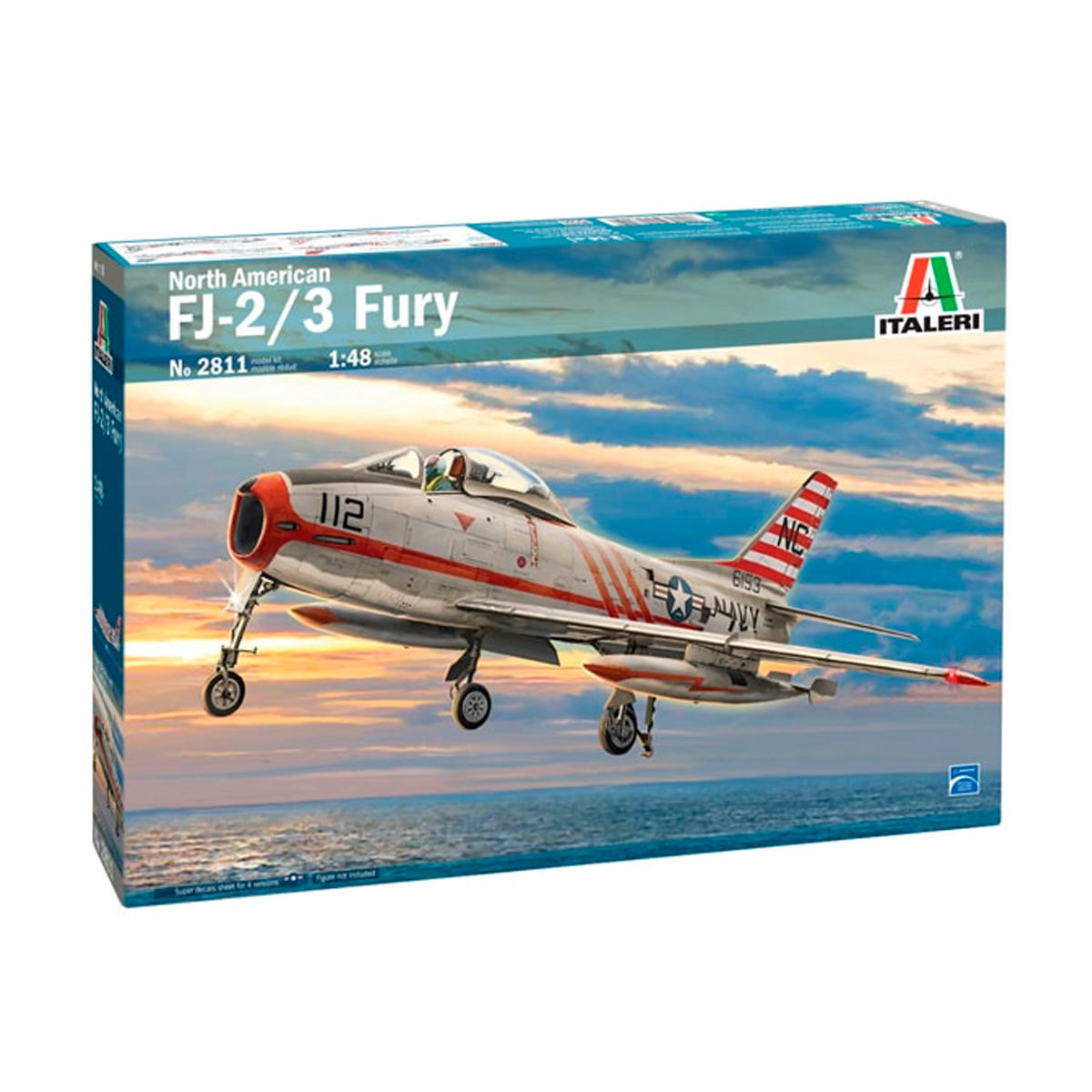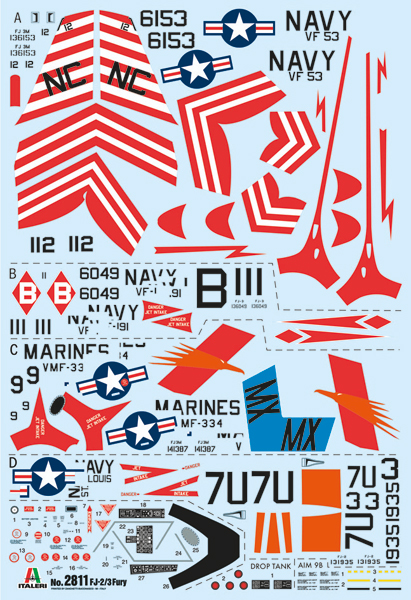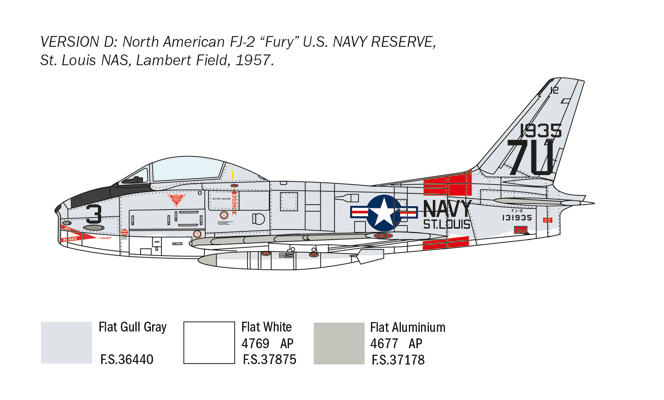1/48 NORTH AMERICAN FJ-2/&3 FURY
27,95€
Solo quedan 1 disponibles

*Please check our Privacy Policies to see how to we use your personal data.
*Por favor revisa nuestra Política de Privacidad para ver como tratamos tus datos personales
Italeri 1/48 NORTH AMERICAN FJ-2/&3 FURY
SUPER DECAL FOR 4 VERSIONS – COLOR INSTRUCTIONS
FIGURE NOT INCLUDED
The North American FJ-2 Fury was the result of a request by the United States Navy and the United States Marine Corps for a carrier-based version of the F-86 Sabre swept-wing fighter. The carrier-based fighters of the time still used a straight wing aerodynamic design, which made them inferior to the feared Soviet Mig-15 with its swept wing, extreme maneuverability, and high operational capability. Production of the “Fury” began in 1952 with the necessary structural modifications for takeoff and landing on aircraft carriers. The aircraft adopted folding wings to optimize space on board, an elongated nose, and reinforced landing gear. Thanks to the General Electric J47 jet engine, the Fury had good flight performance and a maximum speed of 1,086 km/h. It was armed with four Colt Mk. 12 cannons installed in the nose. The next version, the North American FJ-3, was equipped with a new engine with improved performance.
Italeri 1/48 NORTH AMERICAN FJ-2/&3 FURY
SUPER DECALCOMANÍA PARA 4 VERSIONES – INSTRUCCIONES EN COLOR
FIGURA NO INCLUIDA
El North American FJ-2 Fury fue el resultado de una solicitud de la Armada de los Estados Unidos y el Cuerpo de Marines de los Estados Unidos para una versión basada en portaaviones del caza F-86 Sabre de ala en flecha. Los cazas basados en portaaviones de la época aún utilizaban un diseño aerodinámico de ala recta, lo que los hacía inferiores al temido Mig-15 soviético, con su ala en flecha, su extrema maniobrabilidad y su alta capacidad operativa. La producción del «Fury» comenzó en 1952 con las modificaciones estructurales necesarias para el despegue y el aterrizaje en portaaviones. El avión adoptó alas plegables para optimizar el espacio a bordo, un morro alargado y un tren de aterrizaje reforzado. Gracias al motor a reacción General Electric J47, el Fury tenía un buen rendimiento de vuelo y una velocidad máxima de 1086 km/h. Estaba armado con cuatro cañones Colt Mk. 12 instalados en el morro. La siguiente versión, el North American FJ-3, estaba equipada con un nuevo motor con un rendimiento mejorado.









 Solicitud de ficha producto tipo SDS / Seguridad de producto
Solicitud de ficha producto tipo SDS / Seguridad de producto